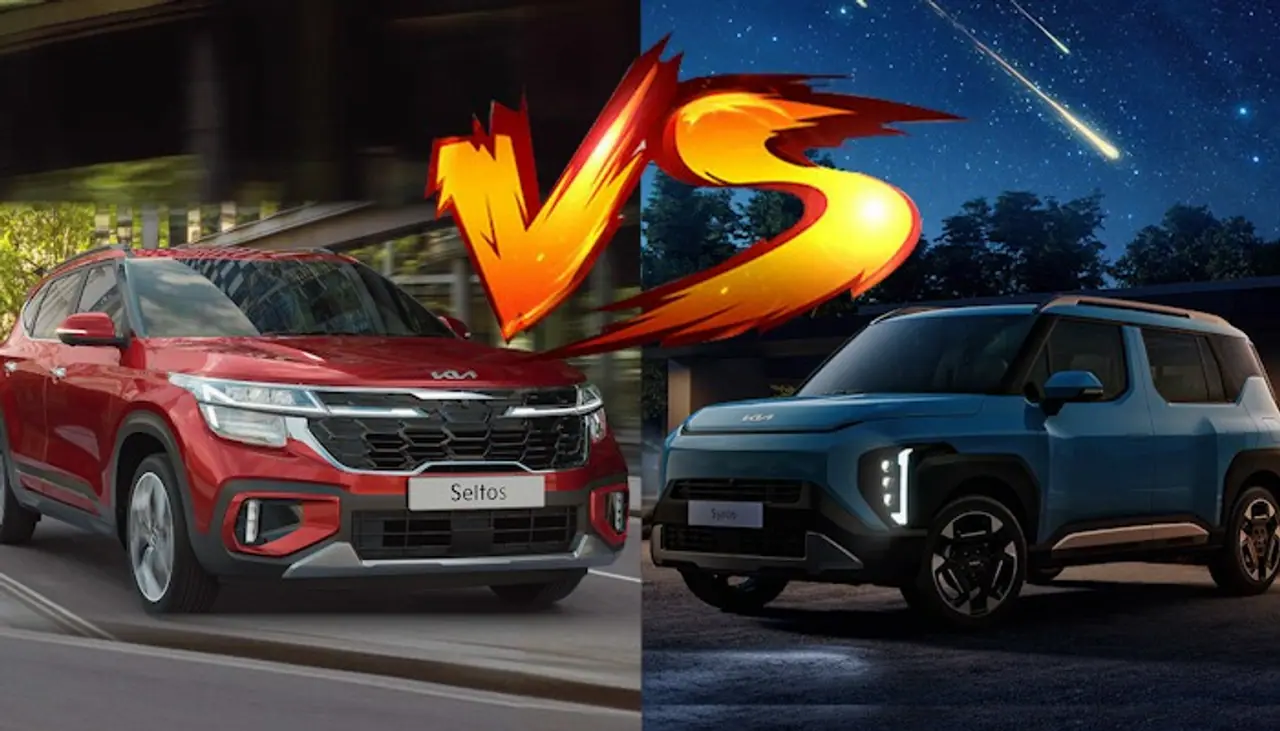Kia Syros vs Kia Seltos: 5 key differences explained
The Kia Syros, a new SUV positioned between sub-four-meter and small models, boasts features not found in the Seltos, including flush-mounted door handles, rear-seat ventilation, reclining rear seats, a larger infotainment system, and a turbocharged petrol engine with a manual gearbox.

As the Korean automaker prepares to develop a new SUV market that falls between the sub-four-meter and small models, the Kia Syros SUV made its debut in India in December. With its boxy style, the Syros is a high-end SUV that has more amenities than the majority of vehicles in the aforementioned sectors. These are a few items that are absent from even the Seltos SUV.
The Syros is somewhat bigger than the Sonet and has certain characteristics with Seltos. The Syros is broader than Sonet and as wide as the Seltos at 1,800 mm. In addition, its wheelbase is greater than that of the sub-compact SUV. The Syros, which is just under four meters long overall, will fight in the sub-compact SUV market, which is currently occupied by the Kia Sonet and other vehicles such as the Hyundai Venue, Maruti Suzuki Brezza, Mahindra XUV 3XO, Tata Nexon, and Skoda Kylaq. In contrast to the Sonet, Kia hopes to appeal to a younger and more affluent clientele with the Syros.

1. High-end comfort
The Syros SUV is designed to provide clients with high-end comfort and amenities at a price point between Rs 10 lakh and Rs 20 lakh. Kia made the decision to provide the Syros with a distinctive design language that instantly distinguishes it from other vehicles in the small and sub-compact classes. The flush-mounted door knobs are one design feature that Syros has whereas Seltos does not. The Tata Curvv and Curvv EV are the only vehicles in the small market that have this functionality.
2. Seat ventilation for rear passengers
Ventilated seats in the second row are the second characteristic that Syros has over Seltos. For the first time, a car in the small class or below is providing seat ventilation for every passenger. Both the Sonet and Seltos SUVs include front-row passenger and driver seat ventilation.
3. Reclinable rear seats
Reclinable rear seats with sliding capabilities are the third characteristic that Syros may highlight in comparison to the Seltos and other vehicles on the market. In the small sector, sliding rear seats are most prevalent, but reclining rear seats are also frequent. In addition to giving the backseat passengers additional leg room, this also makes the reclining feature more comfortable. By extending the cargo capacity to 465 liters with all seats up, the sliding function also helps to free up extra room in the back for luggage.
4. Infotainment system
The enormous 30-inch display that contains the 12.5-inch infotainment and driving screens is another feature that distinguishes Syros from Seltos. A third, five-inch screen for climate control is also included. Compared to those found within the Syros, the Seltos' dual-screen layout is significantly smaller.
5. Turbocharged petrol engine
The launch of the turbocharged petrol engine with a manual gearbox option is the sixth. A 1.0-liter turbocharged petrol engine paired to a six-speed manual gearbox powers the Syros. This is the first time a manual gearbox-equipped turbocharged petrol version of a Kia SUV has been released. The 1.5-liter turbocharged petrol engine of the Seltos is available with either the CVT or iMT transmission.
Get all the latest Automobile News, including updates on Electric Vehicles, new car and bike launches, reviews, and auto industry trends. Stay informed about mileage comparisons, performance insights, and expert opinions to guide your next vehicle choice. Download the Asianet News Official App for all the latest updates from the world of automobiles.